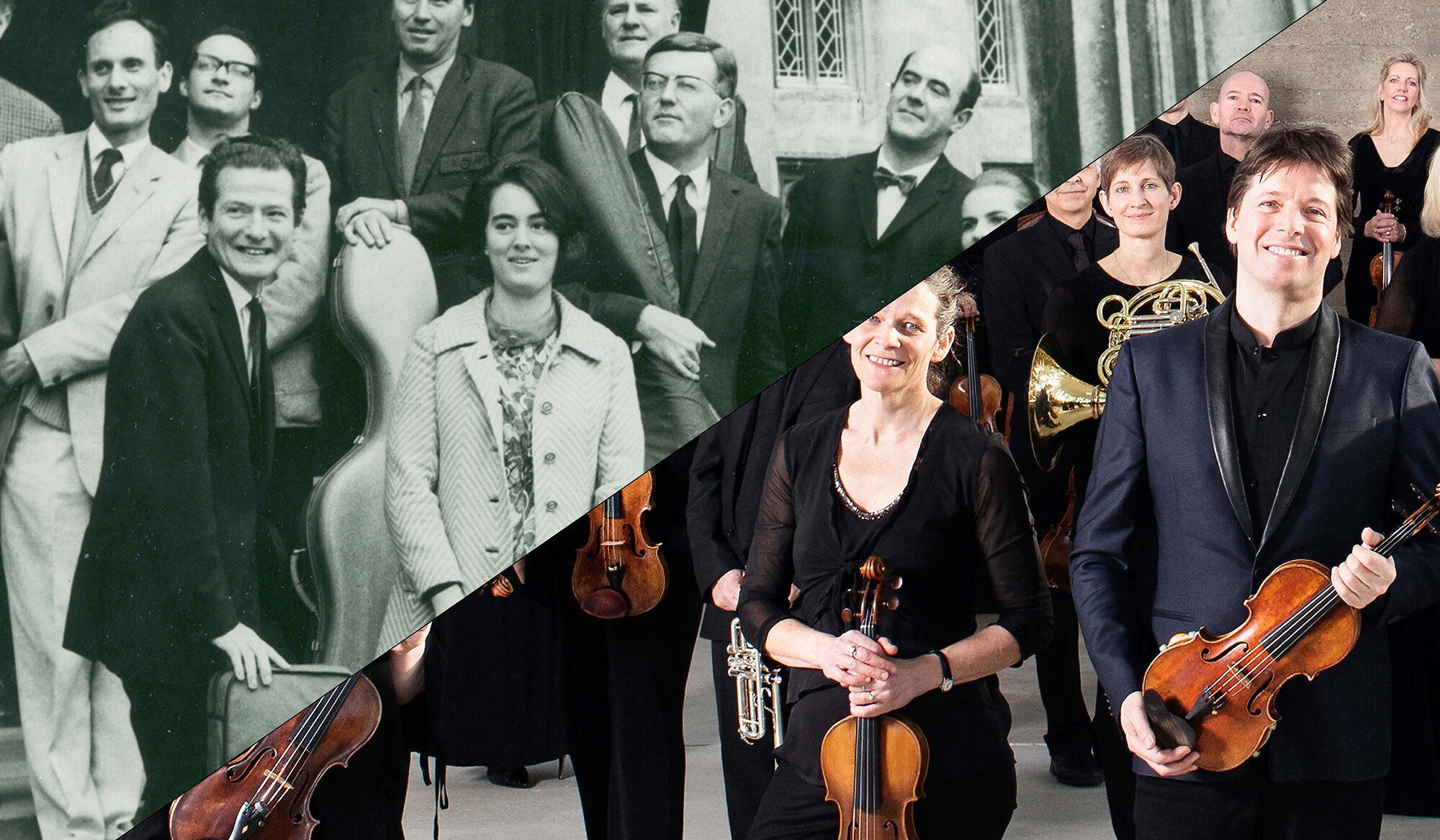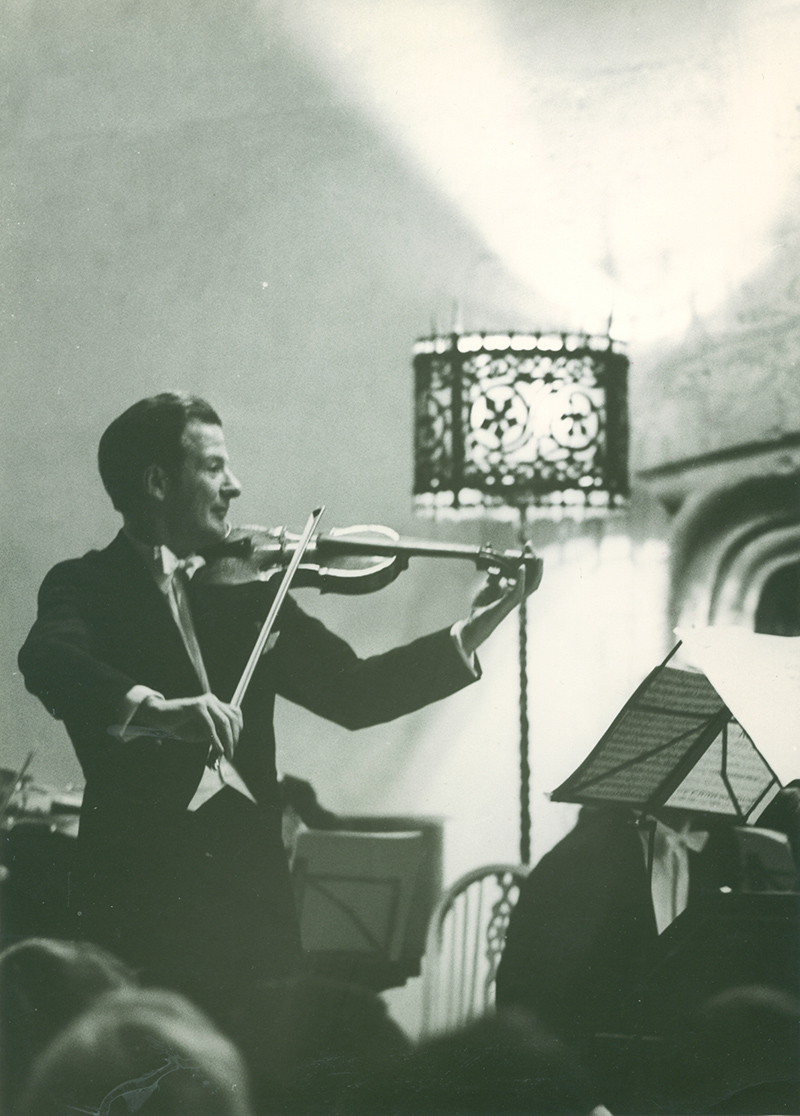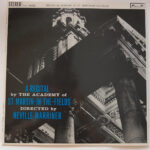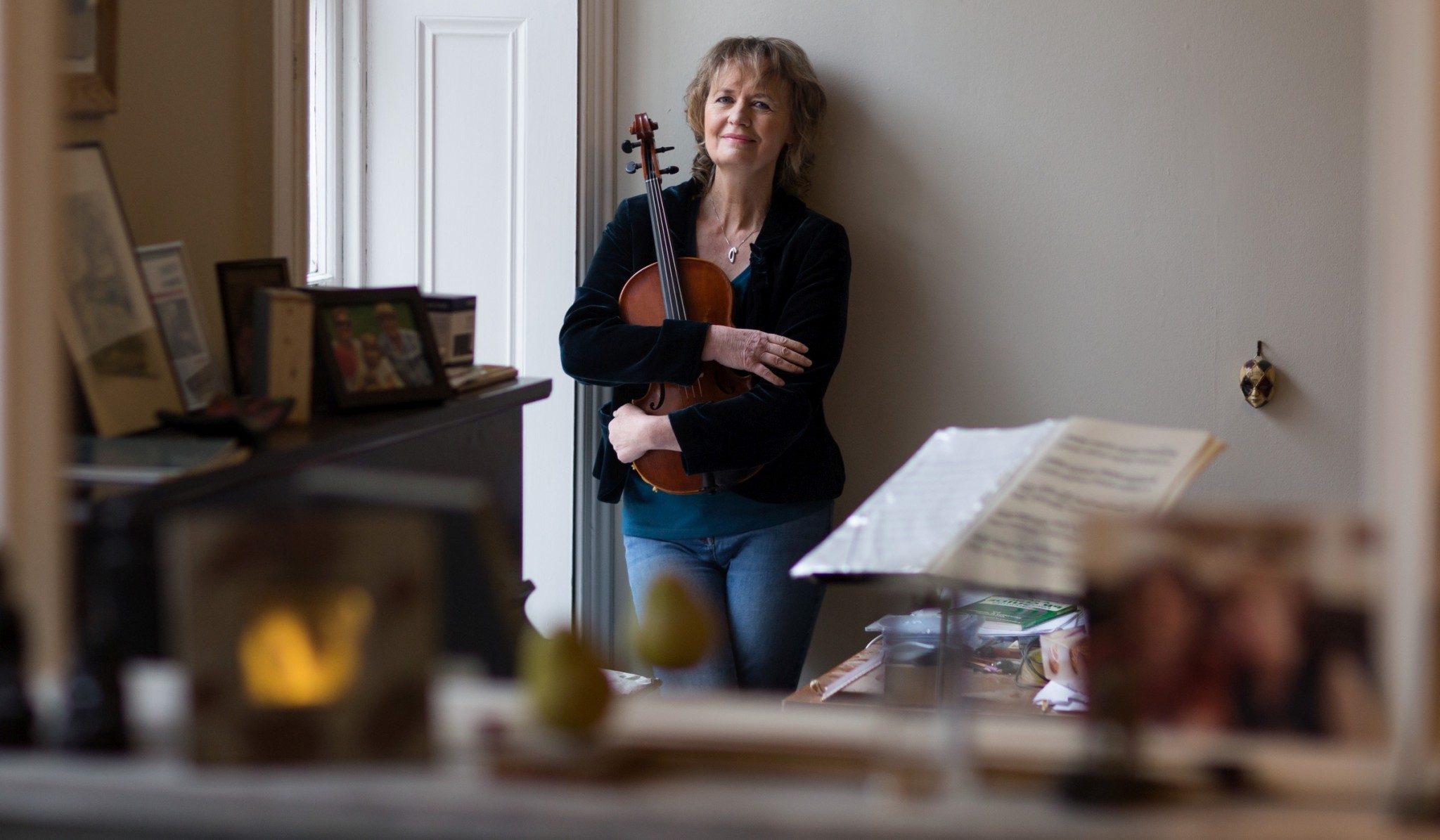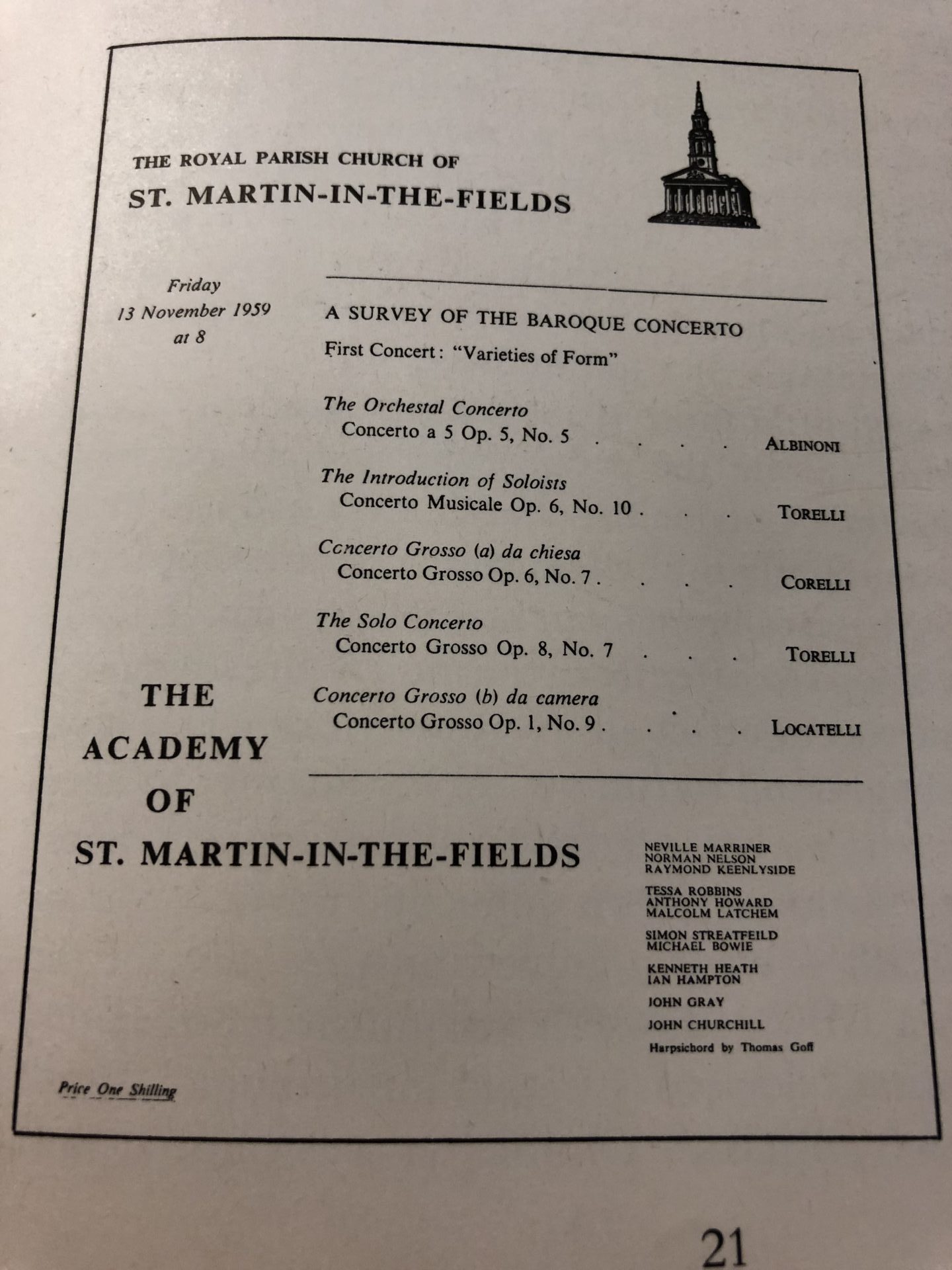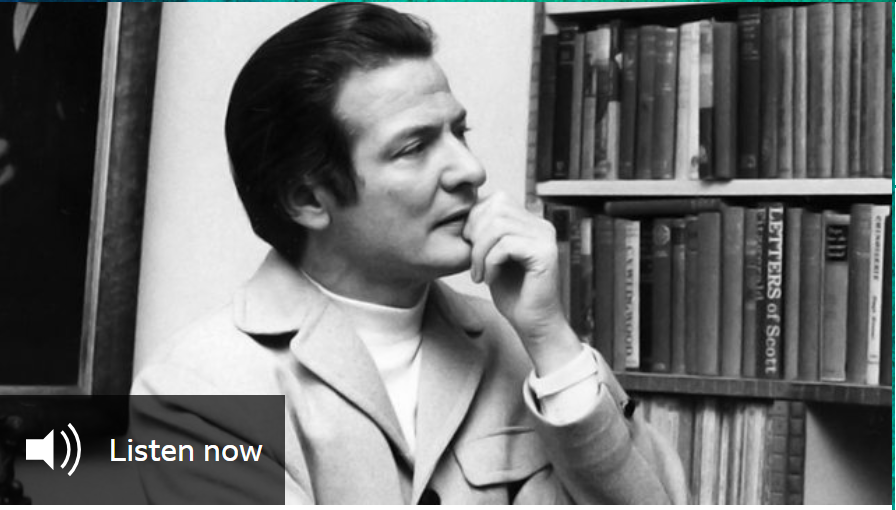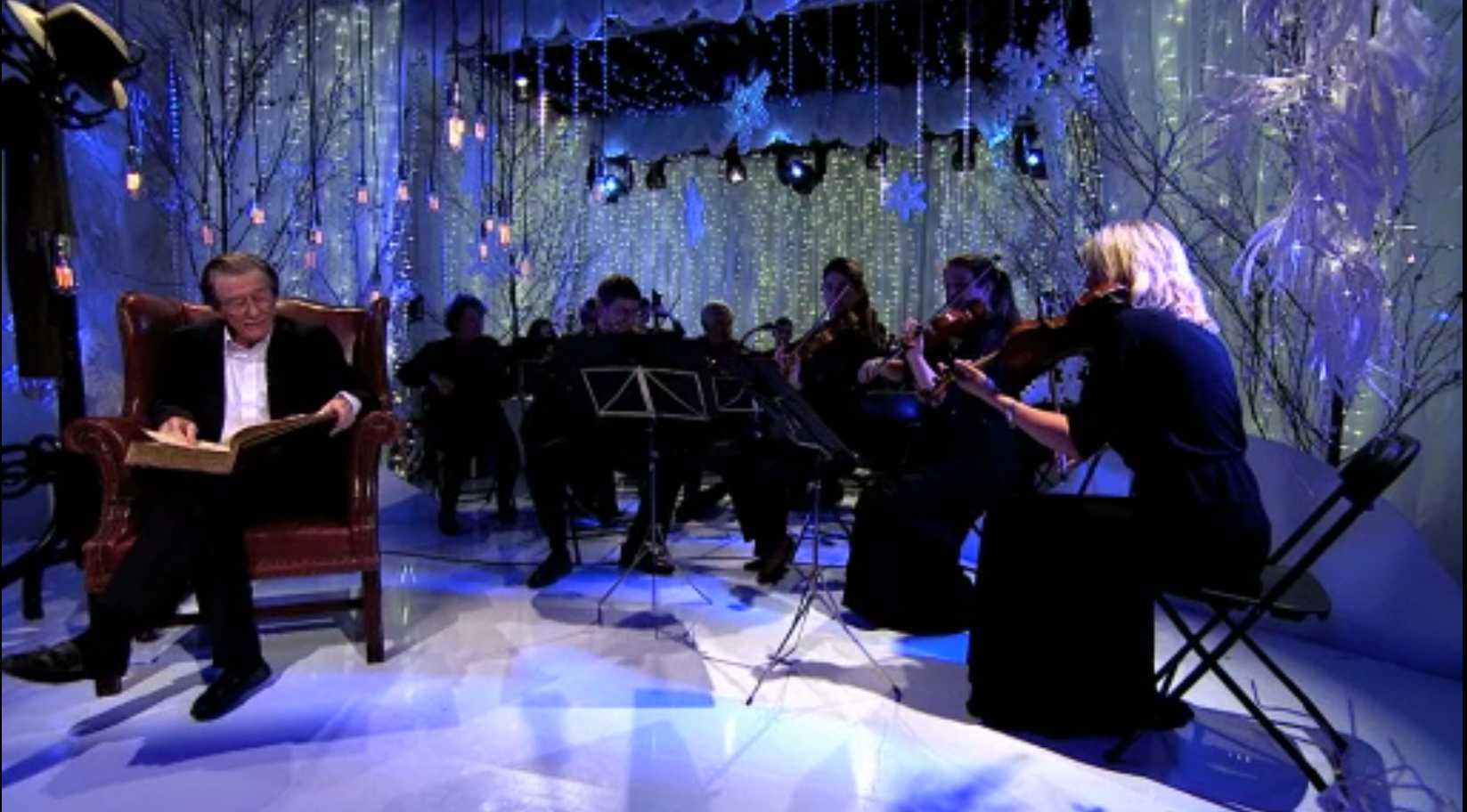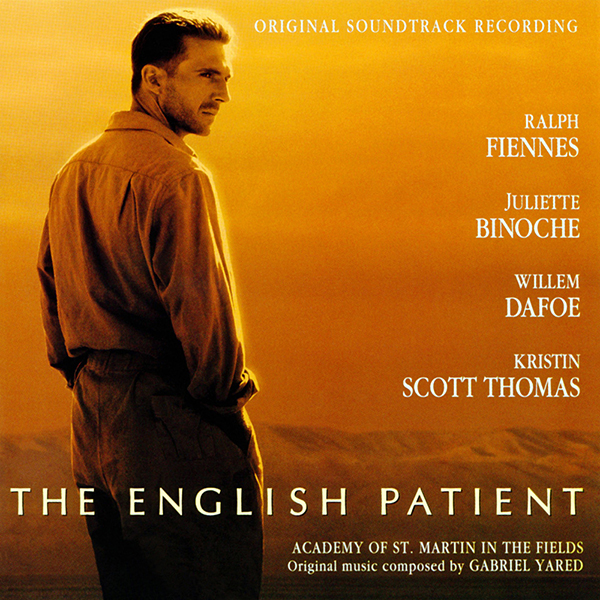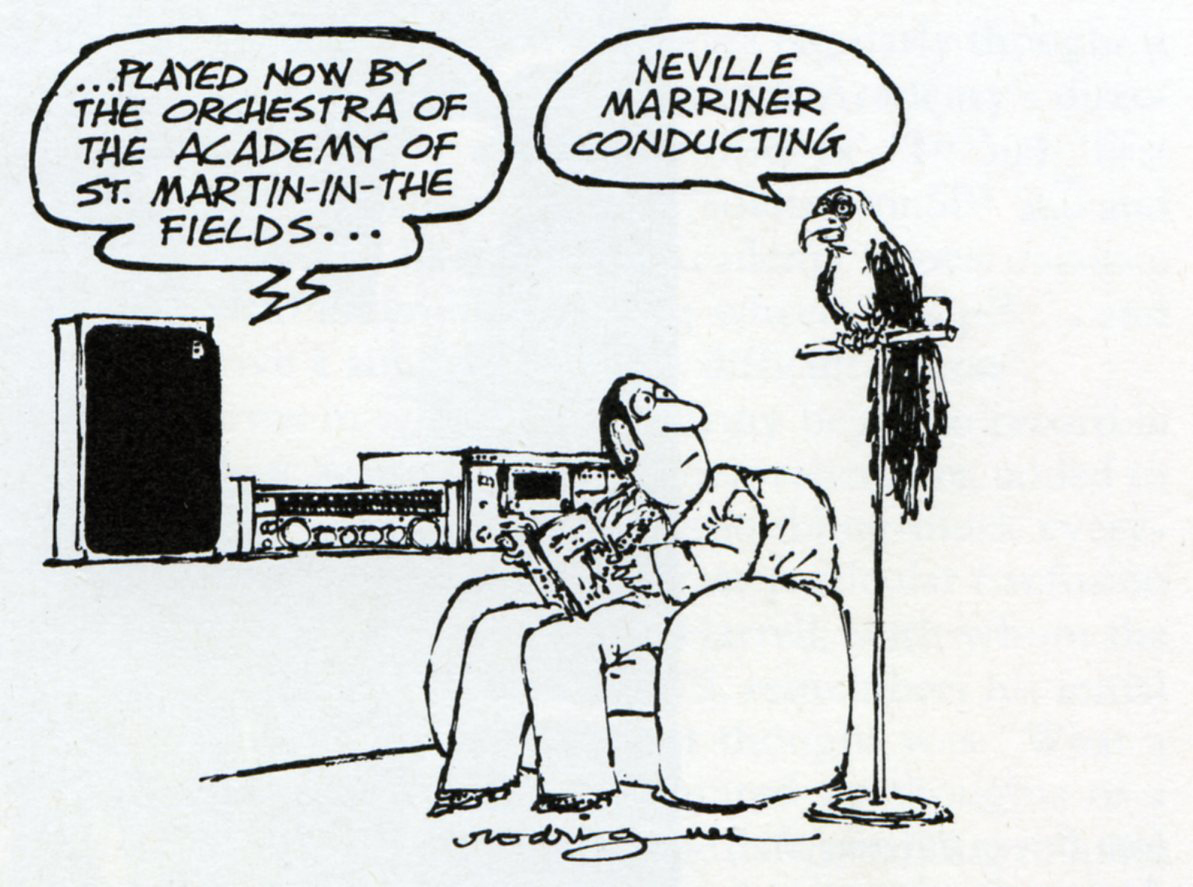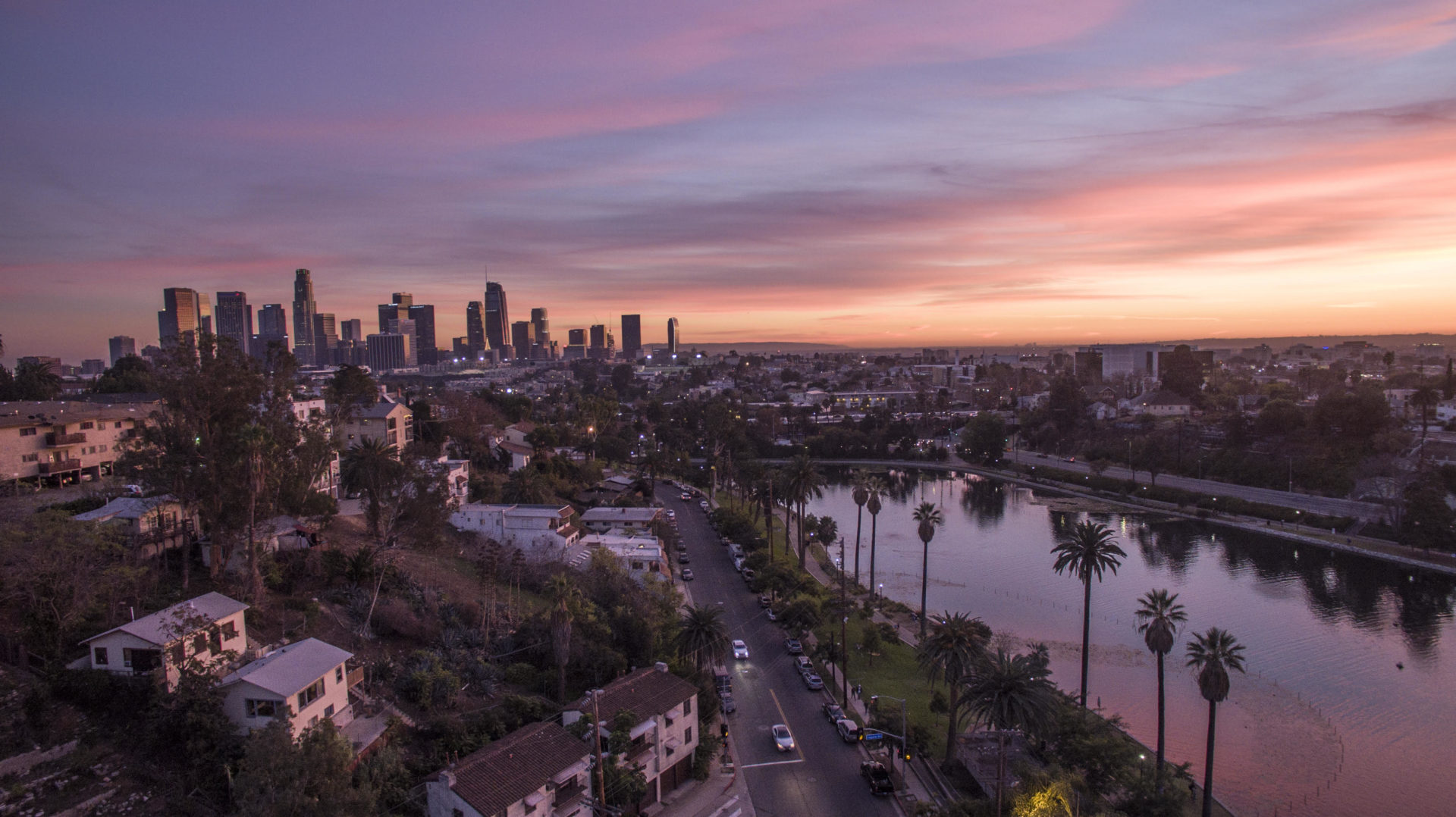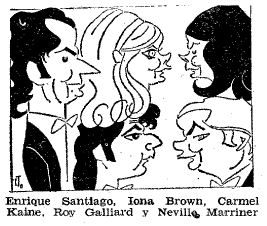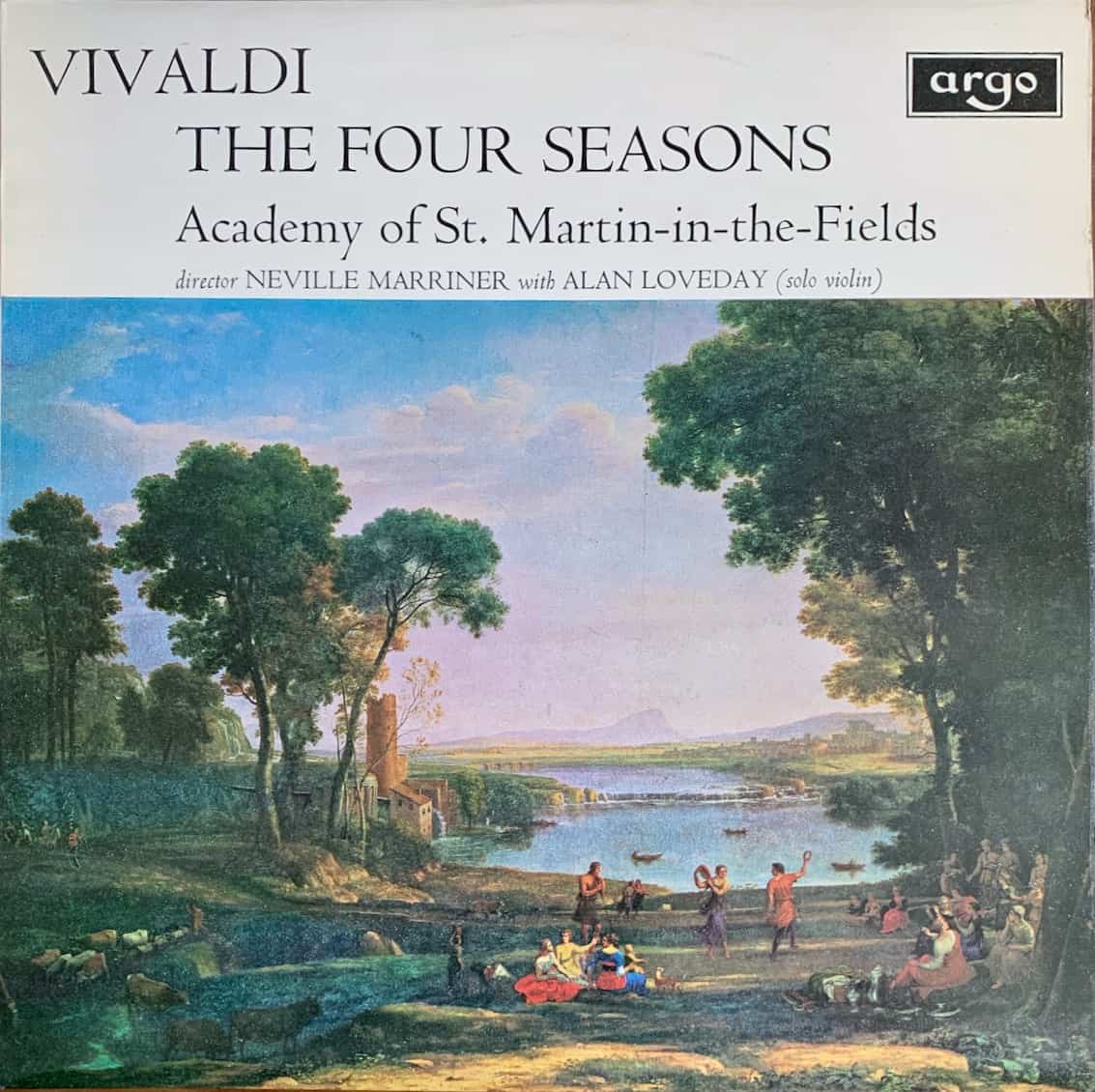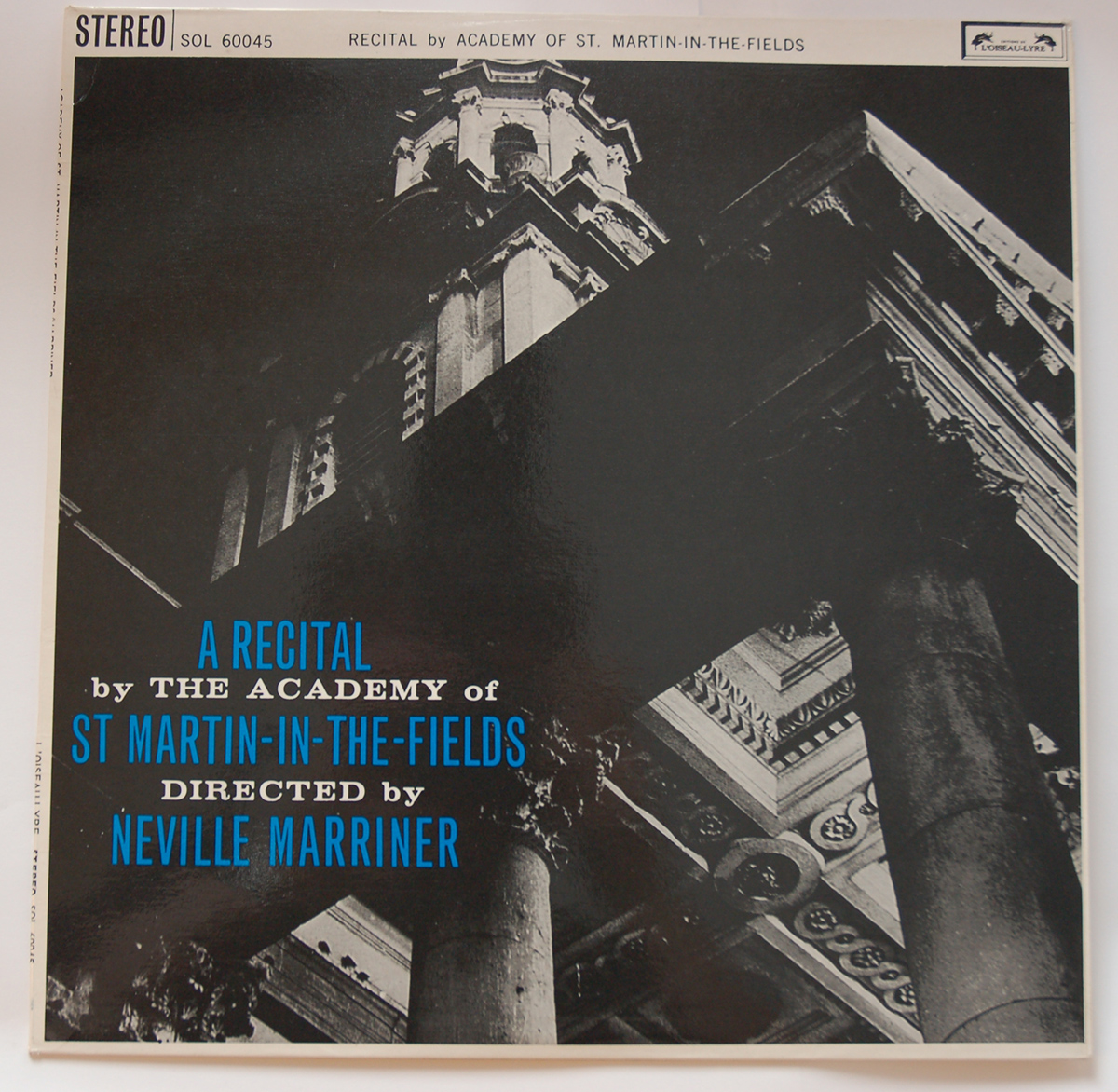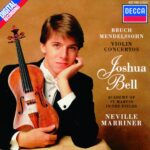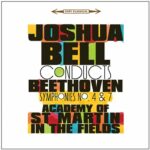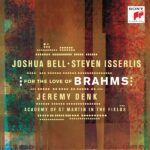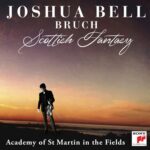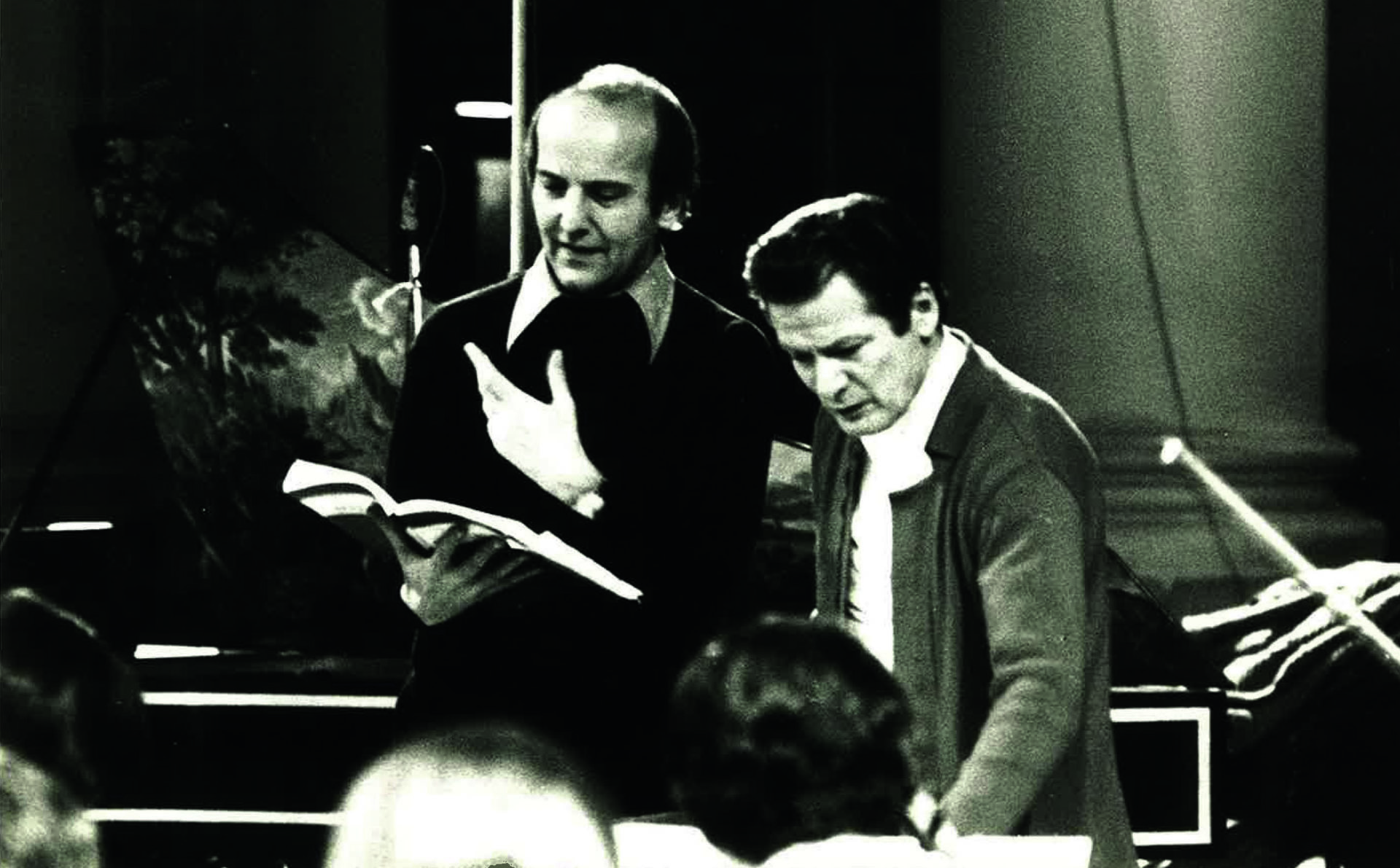Celebrating our 60th anniversary
Throughout the season we’ll be sharing videos, podcast episodes, photos and more that celebrate the stories, memories and mementos of our 60-year history.
1. Joshua Bell on his earliest memories of the Academy
2. Lady Marriner, Sir Neville’s widow, talks with Sir David Attenborough about how the Academy came to have its unusual name
3. A message from Alan Watt
The Academy’s Chief Executive, Alan Watt, introduces our 19/20 season in this short video. As well as taking you on a whistle stop journey through our touring plans, and our Learning and Participation activities, Alan has a message for our audiences around the world.
4. Amadeus – 35 years on
“The next time we talked about it, [the possibility of the Academy recording the Amadeus soundtrack], was down in the country in Devon where I have a house – Milos (Forman – the film’s director) arrived with a very big Hungarian sausage for us to spend the weekend eating and we played tennis – Milos is quite good but he didn’t win…. We decided which episodes in the script were going to need music and what sort of music and then it was agreed we could record the music so we came to London – in Abbey Road Studios – and recorded everything.”
Amadeus went on general release in the USA in September 1984. The movie won 8 Academy Awards and the soundtrack, recorded by the Academy and Sir Neville Marriner, reached #1 in the Billboard Classical Albums Chart, #56 in the Billboard Popular Albums Chart, has sold over 6.5 million copies to date and received 13 Gold Discs, making it one of the most popular classical music recordings of all time. Sir Neville recorded a conversation about Amadeus – and how the Academy came to be involved – for the Academy Podcast in 2016
5. Musical Conversations – the Academy’s intergenerational orchestra
In the first of several ‘Moments’ celebrating our learning and participation work, we wanted to share a story about our most recent work in schools.
Between January-June 2019, the Academy of St Martin in the Fields ran the pilot phase of an intergenerational music project with students from Langdon Academy and local older residents from Newham.
The aims of the project were to address loneliness amongst older people and to increase creativity and enjoyment of classical music along with tolerance and understanding. The group worked with Academy musicians, animateur Jason Rowland (Royal Opera House, Philharmonia Orchestra, London Philharmonic Orchestra), filmmaker Chuck Blue Lowry (work shown at the British Film Institute, Women of the World Festival, London Short Film Festival and Whitechapel Gallery amongst others) and theatre maker Sue Mayo (Magic Me, People United, Goldsmiths College) to create an original composition, called My Song for You.
Some of the group created texts for the performance, while others learned new instruments or developed their skills to create the piece, which was inspired by Dvorak’s ‘Serenade.’ As well as music making, the group thought a lot about what a serenade is. Why would you sing to someone else, and how do we show our love for others? This involved lots of conversation across generations, discovering commonalities and differences.
“It was wonderful to work together and not worry about age or background”
(older person.)
“Before I was shy and used to stammer a lot but when we got to know each other and the band we got stronger. We worked as a team”
(younger person.)
Following the success of this pilot project, we are developing a guide on delivering intergenerational music projects to enable Langdon Academy to run the project again next year. We are also seeking funding to work with other schools and the older people within their local communities.
6. The Academy Chamber Ensemble
To celebrate their autumn tour of the US and Canada, here is a special ‘Moment’ all about the Academy Chamber Ensemble.
At the heart of the concert programme for this tour is the Mendelssohn Octet for Strings in E flat Major, Op.20. This spirited work, written by the 16-year-old Felix, was performed at the first concert the ensemble ever played, on its foundation in 1967, and has since become a firm favourite of the Ensemble and audiences alike.
The Chamber Ensemble was, in fact, formed specifically in order to play the Mendelssohn Octet and the success of the ensemble – being as they were eight players extremely used to playing together rather than two separate quartets brought together for the performance – was apparent right from the start.
“My favourite recording of the Octet, and the first I ever heard” Tom Service, The Guardian, on the 1979 recording above
The Academy Chamber Ensemble comes in different shapes and sizes, (for example often performing as a quintet, sextet or octet), depending on the repertoire and is made up of the Academy of St Martin in the Fields’ principals – both string and wind players. The Chamber Ensemble enables the Academy to programme chamber music in addition to the works played by the full orchestra and, in fact, in the early days the Chamber Ensemble often played the second part of the Academy concerts, with the rest of the orchestra going off stage. Having the Academy’s principals regularly playing chamber music together helps the orchestra remain in touch with the chamber music approach to its music making.
“an ensemble of first-rate musicians, technically superb, generously expressive, and obviously enjoying themselves.” Dallas Morning News
Listen to an episode of the Academy Podcast all about the Chamber Ensemble where, among other things, you can hear Tomo Keller talk about the qualities and the pure joy of the Mendelssohn Octet.
7. The Academy’s Music Library
As it’s Libraries Week we thought we’d take you on a quick tour of the Academy’s music library where you’ll find boxes, filing cabinets and shelves full of scores and instrumental parts…

Depending on the repertoire we will hire or buy the music and, over the years, have accumulated a lot of music! There are various works for which we own more than one copy with each one containing the markings of a different director. For example we have several sets of Vivaldi’s Four Seasons with the bowings and other markings from Neville Marriner, Joshua Bell and Julia Fischer.

There are many musical gems within the library – for example Neville Marriner’s set of scores from the recording sessions for the Amadeus soundtrack

Every now and then there’ll be a sheet-music based emergency – our former Concerts & Tours Manager, Richard Brewer, tells one such story here
8. Meet the Academy’s Leader, Tomo Keller
In this short video Tomo Keller shares his early memories of the Academy and gives some fascinating insight into his role as leader of the Academy.
9. Four Academy Firsts
Your potted guide to how the Academy started, and the ensemble’s first concert, tour and recording.
1. How it all began
The Director of Music at the Church of St Martin-in-the-Fields, John Churchill, had the ambition to form a small orchestra at the church and some initial funding was secured. Neville (Marriner), an expert of both baroque and chamber music was taken to a pub in the neighbourhood of the church and over a pint it was decided that the ensemble should consist of 11 string players and the church’s organist on harpsichord, plus additional wind players when the repertoire so required. The ensemble would be led by Neville from the first desk of the violins, without conductor – a practice that had been in use in the baroque era, but was not common anymore.
2. The first professional concert
‘A Survey of the Baroque Concerto’ was given at the church of St Martin-in-the-Fields on 13 November 1959. Tickets were a shilling.
3. The inaugural tour
The Academy’s first ever tour was to Ireland. Despite being warmly received by audiences the residing memory of the tour was the cold! After performing in a cold hall in Dublin, the orchestra travelled by (cold) bus to Waterford. After a night in a cold hotel, they took a bus back to Dublin. Unfortunately, the bus windows were jammed open – it was so cold one player’s arm even froze-stuck to a window!
The Academy was spotted as a new talent by the record company L’Oiseau-Lyre’s owner Louise Dyer, who was in the audience for the Academy’s first concert, and “A Recital by the Academy of St Martin in the Fields” was recorded in Conway Hall, 1961.
“played with precision, care, consummate musicianship, and with more sense of style than all the other chamber orchestras in Europe put together.” Gramophone
Text adapted from The Academy of St Martin in the Fields by Meirion and Susie Harries
10. Composer in Residence: Sally Beamish
Sally Beamish is one of Britain’s best-known contemporary composers. Renowned for her versatility, Sally’s catalogue of works includes concertos for instruments from violin to accordion; music for film, opera and dance; tributes to composers from Debussy to Britten; and incorporates diverse influences from jazz to the music of Scotland. A former member of the Academy of St Martin in the Fields, she has recently returned to playing, on a viola made by her daughter, after a gap of 25 years. Sally Beamish is the recipient of an honorary doctorate from the University of Glasgow and was recently made a Fellow of the Royal Society of Edinburgh. Her music is published by Edition Peters and by Norsk Musikforlag.
Q: You’re the Academy’s first Composer in Residence – how did this appointment come about and what does it mean to you to have this role? It was a great honour to be invited, and very special to me because of my long relationship with the Academy – first as a child attending rehearsals and sessions when my mother (Ursula Snow) was playing, and then as a viola player myself. Neville was very encouraging of my first steps towards becoming a full-time composer, and invited me to write for the orchestra really before I was ready; I had never written for orchestra. He came back with the request a few years later, and the Academy have commissioned quite a few pieces since then. Of course, the performances have been superb. I discussed the residency with Neville not long before he died, so it is particularly poignant to have written this work in his memory.
Q: How does familiarity with an ensemble and its individual musicians impact or influence the writing of music commissioned by it? It’s a gift to have the individual sounds of the musicians in my head when I’m composing – a great starting point, and an inspiration.
Q: What is it like when you hear a piece you’ve written played for the first time – does it sound as you expect, are there things you hear that are surprising? There are always aspects that surprise me, as the players bring their own artistry to a new piece. They often uncover things I didn’t know were there.
Q: Which composer, living or dead, would you most like to have a drink with, and why? I’d love to share a bottle of Valpolicella with the 17th century composer and poet Barbara Strozzi. In her lifetime she was the most prolific, and most published, Venetian composer of secular vocal music, male or female. A colourful and gifted woman who was way ahead
of her time.
Q: You wrote a piece in memory of Sir Peter Maxwell Davies inspired by a blackbird. Hover is inspired by Manley Hopkins’ poem The Windhover which is about a falcon. Is this an ornithological coincidence or do birds inspire particular ideas for you? Birds, and birdsong, have always figured strongly in my music, but in the case of the ‘hover’ theme, I was referring to my own sense of suspension before my move back to England from Scotland. It was only afterwards I realised that in depicting his powerful, graceful, and intensely focused bird, I had in fact written about Neville.
The Academy gives the UK premiere performances of Hover at Southbank Centre’s Queen Elizabeth Hall on Tuesday 12 November and West Road Concert Hall, Cambridge on Thursday 14 November.
11. The First Concert – Friday 13 November 1959
On 13 November 1959 the Academy of St Martin in the Fields gave its first public performance at the church of St Martin-in-the-Fields. Tickets to ‘A Survey of the Baroque Concerto’ cost one shilling and the programme featured works by Baroque composers affectionately dubbed “the Italian ice cream merchants” by Neville Marriner.
12. The one where everybody was late
Back in 1984 the Academy was scheduled to give a concert performance at the Royal Festival Hall on London’s south bank. Our Music Librarian, Katherine Adams, remembers the day well as it was her first concert as a member of the orchestra’s staff. She arrived at the venue in very good time but as the ‘curtain up’ time arrived there was an eery quiet all around the venue and neither audience nor orchestra appeared… It transpired that, due to a student strike and ensuing delays to traffic, almost everybody was late in arriving.
Luckily the show did go on. Eventually.
Were you in the audience for that performance – or were you meant to be? Share your memories of the Academy – see how below.
13. Neville Marriner on BBC Radio 4’s Desert Island Discs
The Academy’s founder, Neville Marriner, was interviewed by Roy Plomley for Radio 4’s Desert Island Discs – a programme where guests select the eight tracks, book and luxury that they would take to a desert island. The episode was first broadcast on December 13 1980.
Hear the episode via Radio 4’s Desert Island Discs 1976-1980 Archive Podcast
14. The Snowman with Sir John Hurt
In 2014, the Academy appeared as part of Sky Arts ’12 Days of Christmas’. In the run up to Christmas, performances were given in a shop-front in Westfield Stratford City – a shopping centre in east London – and broadcast on the Sky Arts channel. The Academy performed Howard Blake’s much-loved The Snowman – narrated by the legendary actor, Sir John Hurt.
15. The English Patient
“A sumptuous score… brim full with wistful romantic love melodies which seem to have a life of their own” Classic FM
January is Golden Globes month and the perfect time to remember back to 1996 and the Academy’s soundtrack recording for the multi-award winning film, The English Patient. The film, directed by Anthony Minghella, won Golden Globes for Music and Best Motion Picture in 1997. The soundtrack’s composer, Gabriel Yared, in an interview later revealed that he composed the award-winning score without seeing film footage. He took his inspiration from the script and from conversations with Minghella. “I was really lucky,” he said. “It is not an easy theme to remember or to sing, it needed the right ears to hear it, to interpret it and to know it had the potential to be used in the film.” [Source: screendaily.com]
The soundtrack isn’t available on Spotify but the CD can be purchased on Amazon.
16. The 2nd most famous parrot sketch*
The Academy’s rich recording heritage – it’s prevalence on the airwaves inspiring this iconic cartoon by Charles Rodrigues for Stereo Review in the 1980s – is celebrated with the release this month of a new 60-disc box-set from Decca. This edition, an exciting new collaboration between Decca and the Academy of St Martin in the Fields, celebrates the Academy’s international reputation for its distinctive, polished and refined sound through a selection of 60 recordings from our catalogue of well over 500 albums.
Recordings have been taken from the Decca, Argo and Philips catalogues, plus Sony Classical, Pentatone and Onyx. The set includes the first and last recordings with Sir Neville Marriner, recordings with Iona Brown and with present director Joshua Bell, – it’s a true survey of the first 60 years of the Academy. Pre-order the box-set here
* the 1st most famous parrot sketch
17. A birthday message from Cornelia Schmid
Find out more about KD Schmid
18. “Can I be in your orchestra one day?”
The Academy’s Sub-Principal Horn, Jo Hensel, recalls meeting Neville Marriner when she was at school.
19. A Los Angeles Connection
Despite a distance of more than 5000 miles between us, the Academy has many significant connections with the Los Angeles Chamber Orchestra.
The Academy’s founder, Neville Marriner was appointed Founding Music Director of LACO in 1969. The orchestra was set up at the instigation of a group of music-lovers in Beverly Hills, headed by cellist James Arkatov, attorney Joseph Troy, and industrialist and viola player Richard Colburn who, as Marriner once pointed out, ‘kept the orchestra afloat almost single-handed’ to provide an artistic outlet for Hollywood studio and recording musicians. Remaining in post for a decade, LACO was Neville’s first serious conducting job and in 1979 he took up his post as Music Director of the Minnesota Orchestra in Minneapolis (1979-1986).
The Academy’s former director, Iona Brown was Music Director of LACO from 1987 to 1992 and their new Music Director, Jaime Martin, was a member of the Academy for many years. Truly a family affair, Jaime played alongside his mother-in-law, Celia Nicklin, when she was principal oboe of the Academy and he was principal flute!
Click here to find out more about LACO.
“He has a very good, strong attitude to the orchestra and to the public. Musically, I am sure, he will be a great success.” – Sir Neville Marriner on Jaime Martín in 2008
20. Celebrating Lady Marriner on International Women’s Day
Much of the early success of the Academy must be attributed to Lady Marriner, who single-handedly managed the Academy for our first decade – as accountant, secretary, librarian, booker of players, tour manager, programme note writer, page turner… the list goes on!
21. Schubert Octet
The Academy Chamber Ensemble first recorded the Schubert Octet in the late 70s. Iona Brown led the ensemble, which comprised of herself and Roy Gillard on violin, Stephen Shingles (viola), Denis Vigay (cello), Thomas Martin (bass), Antony Pay (clarinet), Martin Gatt (bassoon) and Timothy Brown (horn). The recording, made for Philips, was very successful and was awarded the Grand Prix de l’Academie Charles Cros in 1979. Shingles, Vigay and Brown also performed on a second recording a decade later in 1987.
Here’s a more recent video of the Academy Chamber Ensemble performing the 3rd movement.
Filmed at the Royal Academy of Music in late 2019.
22. Touring in Spain with Ibermúsica
The Academy has been touring and performing in Spain in collaboration with Ibermúsica since 1973. A leading touring agency, Ibermúsica celebrates its 50th anniversary this season. From their archive, they found a press clipping from the ABC newspaper, published the day after our first concert on 26 March 1973, encouraging readers to attend the Academy’s second concert on 27 March:
“Su concierto de ayer en el Real fue un asombro, y como la concurrencia fue poca y hoy ofrece otro programa de los que se publicará comentario conjunto, sirvan estas líneas de anticipo en el deseo de que lleguen a los aficionados porque de verdad se trata de un acontecimiento artístico.”
“Their [the ASMF] concert yesterday in the Teatro Real was astounding and, as the attendance was small, and today they are offering up a different programme (a joint review of both concerts will be published), I trust these words will reach music enthusiasts because it is truly an artistic event.” (Antonio Fernandez-Cid)
Our first performance with Ibermúsica featured Telemann’s Viola Concerto in G Major (with soloist Enrique Santiago) and works by Stravinsky, Mendelssohn, Rossini, Grieg and Elgar, and the next day’s concert included Bach’s Triple Concerto (soloists: Iona Brown, Carmel Kaine and Roy Galliard) and works by Corelli, Vivaldi, Riccioli, and Handel.
Ibermúsica also found a review of both concerts published by ABC, featuring a charming cartoon illustration of some of Neville Marriner and some of the other performers!
Unfortunately, due to the ongoing situation with Coronavirus, the Academy’s March 2020 tour to Spain and Andorra has been postponed and will be rescheduled later in the year.
23. The Four Seasons
To mark the first day of spring 🌱, we’re celebrating the Academy’s award-winning recording of Vivaldi’s Four Seasons. The Four Seasons has been recorded countless times, but this recording of Vivaldi’s most popular work, performed by the Academy and Alan Loveday on solo violin, remains a benchmark. This was also a ground-breaking recording for the Academy, selling over 750,000 copies, resulting in the award of the Academy’s first ever gold disc. Also featured are Vivaldi piccolo and bassoon concertos, and a concerto for two oboes.
The recording was made for Argo in 1969 and we celebrate the 50th anniversary of its release this year. The recording sessions were originally due to take place at Kingsway Hall but unfortunately part of the ceiling collapsed and so took place at St John’s Smith Square instead.
“Argo had made no recordings there before, nothing was known about its acoustical properties or those of the control room, and the traffic circulating round the church threatened to be a problem. Mike (Bremner – producer) and Stan (Goodall – engineer) spent a morning whistling, clapping and humming snatches of Vivaldi in an attempt to assess the sound – and on the basis of Stan’s gut feeling, Mike took the decision to use it. The equipment was lugged over from Kingsway in furniture vans, manoeuvred into the control room, hastily assembled, and the sessions began. Ten years later, Mike recalled ‘We were all guessing – we simply did not know how it would sound; it could all have been totally unusable for all we knew. But Stan has a gift – deep down inside he knew he couldn’t be far wrong, and he wasn’t. It was marvellous'”.
Excerpt from ‘The Academy of St Martin in the Fields’ by Meirion and Susie Harries (1981)
Listen to the album on Spotify here.
In this video, Sir Neville Marriner recalls the immense talents of the “extraordinary” Alan Loveday, and a small accident that took place with the cherished gold disc…
24. The First Recording
The Academy’s first ever recording was A Recital by the Academy of St Martin in the Fields, made for record label L’Oiseau-Lyre in Conway Hall and released in 1961.
‘The Academy received £5 a head for their first record, and were given only two session in which to record a 40-minute programme of rarely heard works by Corelli, Torelli, and Locatelli (irreverently referred to by the players as ‘the ice-cream makers’), Albicastro and Handel, in editions prepared by Michael Bowie…Despite the pressure, and the Academy’s relative inexperience in the recording studio, the record was a considerable success: Gramophone described it as ‘played with precision, care, consummate musicianship, and with more sense of style than all the other chamber orchestras in Europe put together’.’ Excerpt from The Academy of St Martin in the Fields by Meirion and Susie Harries (1981).
A Recital by the Academy of St Martin in the Fields features as the first disc in ‘Celebrating 60 Years’ a newly released 60-disc box set of Academy Recordings. More information.
25. Murray Perahia, Principal Guest Conductor
In the more than 40 years performing on the concert stage, American pianist Murray Perahia has become one of the most sought-after and cherished pianists of our time, working with all of the major international music centres and every leading orchestra. He is our Principal Guest Conductor and he has toured as conductor and pianist throughout the United States, Europe, Japan, and Southeast Asia with us.
“Perahia’s association with ASMF as the chamber orchestra’s principal guest conductor is longstanding, and the match remains an excellent one. With the piano almost surrounded by the orchestra, his whole upper body communicating with the musicians around him, Perahia was above all a chamber-music partner.” Quote from the Guardian, 2017.
We were scheduled to tour across Europe with Murray Perahia this May and are very disappointed this tour was unable to go ahead. We’ve put together a Spotify playlist of the music we were due to perform so that you can enjoy it at home.
26. David Attenborough on first meeting Neville Marriner
The acclaimed British broadcaster and natural historian, Sir David Attenborough, was a great friend of the Academy’s founder, Sir Neville Marriner. The two first met in 1963 during a London Symphony Orchestra tour to Japan which Attenborough had, at the very last minute, been invited to film a documentary about. Watch this short video of Sir David in conversation with Lady Marriner, filmed in 2018.
27. Joshua Bell & the Academy – On The Record
We’ve been fortunate to make several recordings with Joshua Bell over the years; first in the mid 1980s when Bell was a teenager, through to more recent years, with Bell appearing both as soloist and in his role as Music Director of the Academy.
You can find all of these recordings, and more, on Spotify, Apple Music and Amazon Music as well as at all good record stores. Several of the discs also feature as part of a new 60-disc box set, produced by Decca in celebration of our 60th Anniversary. More info here
28. Remembering Iona Brown
Renowned violinist and conductor Iona Brown OBE joined the Academy in 1964. Working her way up the ranks as a soloist and leader, she was named the Academy’s director in 1974.
Iona Brown was featured on many Academy recordings such as the Telemann Violin Concertos pictured above. Her signature solo piece The Lark Ascending was released on a 1972 Vaughan Williams recording with Sir Neville Marriner (listen below).
Iona died of cancer in 2004. In a Guardian obituary, Sir Neville Marriner wrote: “Iona personified the essence of the Academy’s style of music-making. She was an inspiration to several generations of the orchestra’s players… in fact, she was a star.”
29. Mstislav Rostropovich
The Academy has a history of collaborating with some of classical music’s greatest soloists. In 1976, the Academy recorded Haydn’s Cello Concertos with legendary cellist Mstislav Rostropovich. Watch Rostropovich play and conduct Haydn’s Cello Concerto No. 2 with the Academy led by Iona Brown. Check out his amazing original cadenza at 12:15!
30. The Academy Chorus
The Academy Chorus developed out of a proposal by Hans Ulrich Schmid to profit from Germany’s enthusiasm for English choirs by taking Bach’s Mass in B Minor on tour. None of the choirs approached, however, were ready to send a contingent small enough to match the small forces of the orchestra – it was all or none. So Sylvia (Holford, the Academy’s first General Manager), suggested the Academy find the singers for itself. She knew were to start looking: before joining she had worked both as a singer and accompanist for the choral conductor Laszlo Heltay, who now was appointed director.
One of the singers was recruited after what must count as the shortest musical audition in history. Gerald Finley, a student with a friend in the chorus, came to Sylvia Holford’s front door for a try-out. She opened the door. He said ‘Hello!’ She said: You’re in! The sound of that one word from him was enough for her. Nor was she mistaken. The young bass-baritone was to become one of the hottest properties on the international opera circuit.
Like most English choirs, the singers were amateurs or students. This was a deliberate decision, because Neville and Laszlo wanted part-timers and voices that were not ‘produced’, would blend well, and were light, young and agile to suit the playing style of the orchestra. Vibrato was out. The 1975 German tour was a resounding success… And the recording made for Philips two years later in 1977 stands as a reminder of what a breakthrough this was in the performance of Bach’s choral music.
The Chorus went on to make some 30 more recordings up to the mid 1990s.
[Extract from Making Music by Christian Tyler]
31. Champions League Anthem
The Academy Chorus recorded the Champions League anthem with the Royal Philharmonic Orchestra. Find out more about the origins of the piece in this BBC news article
32. Laszlo Heltay, 1930-2019
Choral conductor Laszlo Heltay was hugely influential for generations of choral singers and conductors. Born in Hungary, and a pupil of Kodaly, he emigrated to Britain in the mid-1950s. In the late 1960s he formed the Brighton Festival Chorus and just under a decade later, was appointed Director of the Academy of St Martin in the Fields Chorus.
‘The chorus made its debut in 1975 in Düsseldorf and was soon an established feature of the orchestra’s programming. Laszlo and Neville made a formidable team, sharing a seriousness of purpose leavened by good humour. The chorus had many years of success, peaking with their work on the acclaimed score of the 1984 film Amadeus (with the choir trained by Laszlo).’ Extract from Philip Fryer’s obituary of Laszlo Heltay, published in The Guardian.
SHARE YOUR ACADEMY MOMENT
Perhaps the first concert you attended was given by the Academy, or you discovered your love of a particular piece through an Academy recording…
If you have a special connection to or memory of the Academy please get in touch with Ellie at marketing@asmf.org or use hashtag strong #ASMF60

